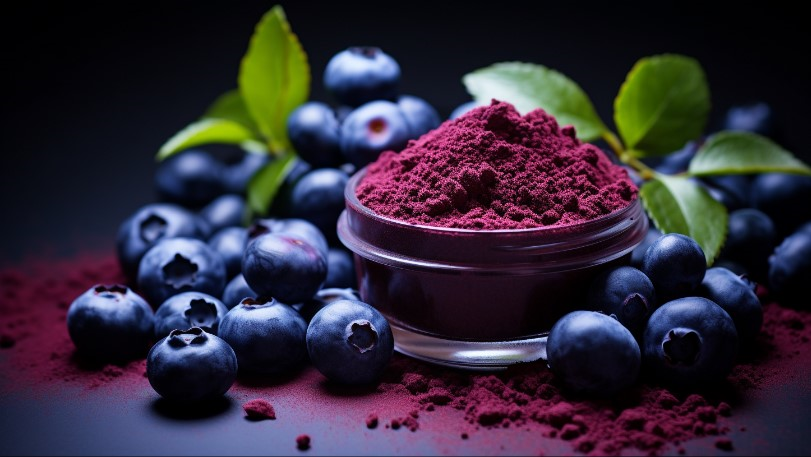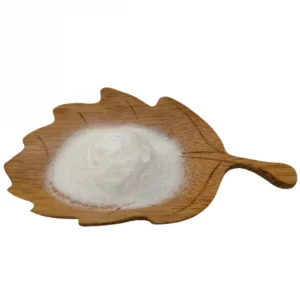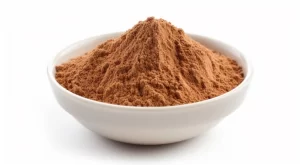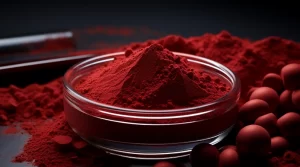Der Nutzen von Anthocyanen für die Augen muss frühzeitig bekannt sein

Anthocyane, as natural pigments, are of great significance to human life and health, disease prevention and treatment. After research, anthocyanins are rich in biological activity. Such as prevention of cardiovascular disease, control of obesity, delay the development of diabetes, improve vision, reduce blood lipids and delay brain optic nerve aging, enhance brain function and so on. In particular, the research content of ophthalmic diseases continues to deepen.
Properties and pharmacological effects of anthocyanins: Structurally, different catechins (catechin) or epicachins (epicachin) combine to form anthocyanins. According to the degree of molecular polymerization, monomer, dimer, polymer and so on. The pharmacological effects of anthocyanins are also very extensive, manifested in antioxidant and free radical elimination. The results of the study showed that anthocyanins are the most potent antioxidant, with antioxidant activity 20 times higher than vitamin C and 50 times higher than vitamin E.
People who use electronic products for a long time, people with bad eyes, must add more anthocyanins to resist the damage of electronic screen light to the eyes, in addition to improving the ability to adapt to the dark, inhibit the growth of the eye axis, reduce eye pressure, and prevent the occurrence of glaucoma and cataract.
So, what are the effects of anthocyanins on the eyes? Take a look
Anthocyane eliminate visual fatigue, protect vision and prevent eye diseases
Asthenopia is caused by excessive use of the eyes resulting in blurred vision, dry eyes, eyeball swelling and other clinical manifestations, its occurrence reasons are various.
Studies have shown that anthocyanins can significantly improve the blurred vision, dry eye, visual durability and total effective rate, and can alleviate visual fatigue. When the eyes are tired, the rhodopsin will be broken down, and because of the excessive consumption of the required nutrients provided by the optic cells, the recovery time of visual function is longer than usual. Anthocyanins can adjust the function of the macula of the human eye, promote the increase of microcirculation blood flow in the fundus, improve material metabolism, and thus reduce the recovery time of the retina and macula, so as to achieve the effect of protecting vision and eliminating visual fatigue.
Anthocyane have a relaxing effect on the constricted ciliary muscle, protect the reserves of farsightedness, and improve false myopia
During most of the day, the eyes are in the use of close-range vision, which can cause excessive constriction of the ciliary muscle for a long time and spasm, resulting in spastic refractive lenses, refractive myopia. In addition to controlling the focus of the lens, the ciliary muscle also controls the production of aqueous humor and maintains the function of intraocular pressure. If the ciliary muscle is tight for a long time, one will cause false myopia, the second will increase the intraocular pressure of aqueous humor, resulting in glaucoma more serious.
Researchers have taken out the ciliary muscle in the eyes of animals to do experiments, after using ET-1 endothelin to stimulate the contraction of the ciliary muscle, inject a anthocyanin D3R, found that anthocyanin can make the contraction of the ciliary muscle quickly relax. Specifically, 0.1mM D3R pretreatment significantly reduced the contraction induced by 10nM ET-1 from 54.9%±15.0% to 42.2%±3.2%[8].
The relaxation effect of anthocyanins on ciliary muscle may be through activating guanine cyclase of endothelial cells, promoting the increase of NO synthesis, and then stimulating the activity of ETB receptor of Ciliary muscle, increasing the production of cGMP phosphodiesterase to mediate ciliary muscle relaxation, thereby eliminating eye fatigue caused by continuous contraction of ciliary muscle and improving false myopia induced by eye fatigue.
Anthocyanins and ametropia
Myopia is one of the most common eye diseases in the world, there is no complete cure for medical treatment, once myopia can cause lifelong problems. Existing researchers have applied anthocyanins to negative lens chick models and found that anthocyanins can inhibit the growth of the eye axis.
In the experiment, the chicks without myopia were given 50mg/kg or 100mg/kg anthocyanin aqueous solution orally, and then the chicks were given negative lenses to induce myopia. The experimental results are shown in the figure below. The experiment was divided into 3 groups: the left control group was oral distilled water, the middle group was oral 50mg/kg anthocyanin group, and the far right group was oral 100mg/kg anthocyanin group. There was no significant difference in anterior chamber depth and lens thickness between the three groups, but the vitreous cavity depth, axial length and eye length above the horizontal axis showed a step-down change from left to right. The depth of vitreous cavity, axial length and eye length were shorter than those of oral distilled water, indicating that anthocyanin could inhibit the abnormal growth of eye axis. The greater the dosage of anthocyanin, the less myopia of chicks.
The experimental study shows that if we do not have myopia, we can supplement anthocyanins to prevent the abnormal growth of the eye axis, which can prevent myopia; For people who are already myopic, anthocyanins can also be added to inhibit the continued growth of the eye axis and achieve the purpose of preventing the further deepening of myopia
Anthocyane can regenerate rhodopsin and improve dark adaptation.
Rhodopsin exists in the outer segment of rod cells, and is synthesized by vitamin A and opsin. It is the most basic substance for the eye to produce vision, and can improve the sensitivity to adapt to dark and low light. Experimental studies have found that after adding anthocyanins to rod cells, the regeneration rate of rhodopsin is significantly faster than that of the control group [9]. Anthocyanins participate in the process of rhodopsin recycling and regeneration. The addition of anthocyanins in the retina will stimulate the combination of opsin and vitamin A, accelerate the regeneration of rhodopsin, and improve the photosensitivity of rod cells. People who usually look at electronic screens will consume more rhodopsin, often feel eye fatigue and vision loss, and need to supplement anthocyanins to accelerate the regeneration of rhodopsin and alleviate the burden of light consumption.
Anthocyanins stimulate rhodopsin regeneration and can also improve dark adaptation. In a clinical study, healthy subjects were given anthocyanins at different doses of 50mg, 25mg, or 12.5mg, and the dark adaptation threshold was measured using Goldmann-Weekers Adaptometer binocular measurements. In the placebo group, the dark adaptation value was 2.018±0.218. The dark adaptation values were 2.004±0.195 in the 12.5mg group, 1.980±0.197 in the 25mg group, and 1.923±0.167 in the 50mg group.
Anthocyanin can reduce the dark adaptation value and improve the dark adaptation ability of the eyes. The dose of anthocyanin is positively correlated with the dark adaptation ability. The higher the dose of anthocyanin, the lower the dark adaptation value and the stronger the dark adaptation ability, and we can see things more clearly under low light.
Anthocyanins can reduce visual field degeneration and increase retinal blood flow in glaucoma
Glaucoma caused by high intraocular pressure will cause damage to the tissues and visual functions of the eyeball, resulting in optic nerve atrophy, reduced field of vision and vision loss. If not treated in time, it can lead to blindness at any time. Glaucoma is the eye disease that leads to the highest rate of human blindness, with the incidence rate of 1% in the total population and 2% after the age of 45. At present, reducing the increase of intraocular pressure through drug or surgical intervention still cannot effectively prevent the progression of glaucoma [12]. Clinical studies have found that supplementation of anthocyanins can activate ETB receptors, thereby promoting the release of NO, affecting the hemodynamics of retinal blood circulation, changing the blood flow to the head of the optic nerve, and reducing intraocular pressure.
A human clinical experiment allowed 30 patients with normal tension glaucoma to take 50mg of anthocyanins orally every day for 6 months, and found that after supplementation of anthocyanins, the retinal blood flow around the neuroretinal margin and papilla, which affect the quality of visual field, significantly increased, reducing the degradation of visual field [13].
In another study, serum ET-1 concentrations in 38 patients with open-angle glaucoma increased to levels similar to healthy subjects after taking anthocyanins, while ET-1 values remained low in patients treated with placebo [14]. The results of these clinical studies suggest that anthocyanin intake therapy has a protective effect on the optic nerve in patients with normal-tension glaucoma and open-angle glaucoma.
Anthocyanins can delay the progression of cataracts
Cataract is an eye disease that older people often suffer from, mainly because the lens of the human eye is exposed to ultraviolet light in natural light and blue light from the electronic screen in the years, the epithelial cells of the lens undergo oxidative stress, resulting in protein degeneration, and the lens of the eye gradually becomes cloudy, that is, cataracts occur. Once suffering from cataracts, seeing things will become blurred, seriously cloudy or even completely unable to see, can only go to cataract surgery to replace the transparent lens, in order to see things again. To explore the protective mechanism of blueberry anthocyanin extract (BAC) on oxidative stress in diabetic cataract, Hong Lou et al injected streptozocin (STZ) into SD rats with diabetic cataract, and then orally took 5% or 15% of blueberry anthocyanin extract 10mL/kg/ day, respectively. The experiment found that with the increase of anthocyanin dose, the expression related to cataract decreased, and anthocyanin significantly delayed the progression of diabetic cataract in rats [15]. We may be able to add more anthocyanins, which are strong antioxidants, to dissolve toxic free radicals, prevent lens epithelial cells from excessive oxidative stress, and prevent the occurrence of cataracts before cataract.
From the above studies, we know that anthocyanin supplementation is very important for vision health, it can relax the constricated ciliary muscle, effectively eliminate eye fatigue, improve false myopia, in addition to stimulate the regeneration of rhodophodopen, reduce dark adaptation, improve our ability to distinguish things under low light conditions, from the negative lens chicken model experiment, We also see that anthocyanins inhibit axial growth, which can help us prevent the occurrence or development of myopia. In addition, anthocyanins can also reduce visual field degradation, improve retinal blood flow in glaucoma, reduce intraocular pressure, protect the optic nerve, delay the progression of diabetic cataract, and prevent the early development of cataract, so we need to supplement anthocyanins.
Anthocyanins supplier: www.backvita.com
E-Mail: [email protected]
Telefon: +86 (029) 8187 2325



